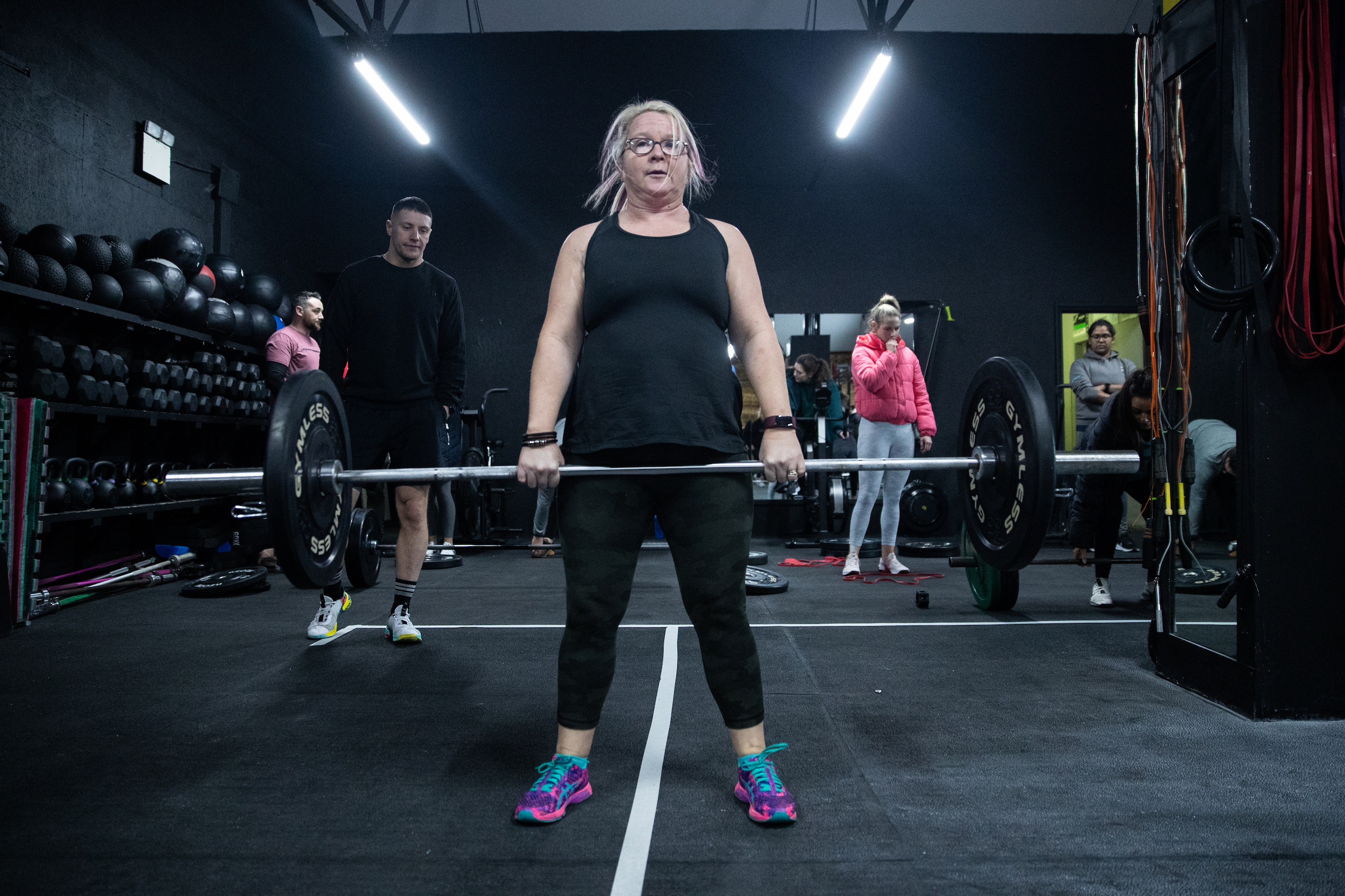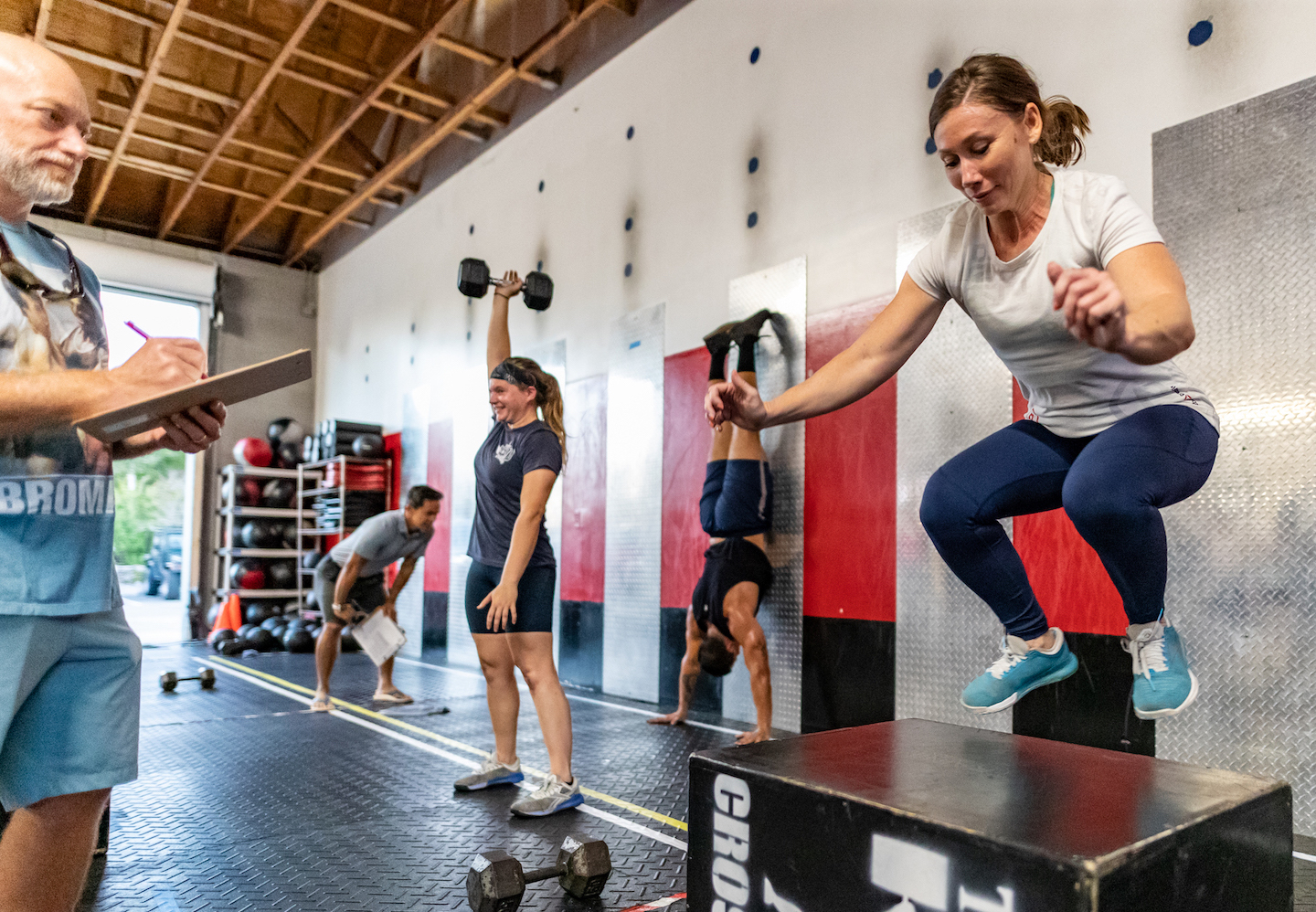“What the heck is a ‘wad’?”
Many people unfamiliar with CrossFit have asked that question.
Well, it’s actually spelled “WOD,” it stands for “Workout of the Day,” and thousands of people all around the world complete it every day, getting fitter and having fun doing it.
The WOD — daily workout programming by CrossFit HQ — has been published to CrossFit.com every day since 2001, and it is freely available to all and accessible to everyone. What it’s not: arm day. Or leg day. Or “core.” In CrossFit, we do it all, and “it” looks different every day — because for those who wish to develop the broadest, most well-rounded fitness, routine is the enemy. The human body is remarkably adaptable, and it must continually be challenged in new and progressive ways to get fitter.
Additionally, CrossFit training is training for what we call “GPP,” or “general physical preparedness.” That means our workouts are designed to get you fit enough to handle whatever adventure or adversity you’re faced with and everything in between — whether you need to pull yourself up onto a poolside, pick up a heavy bag of garden mulch, or run for your life out of a burning building. And the good news is you can start any time — no matter your age or current fitness level.

In CrossFit, some days we lift heavy, some days we lift light. Sometimes we run and jump, sometimes bike or row. We deadlift, clean, and squat. We use barbells, dumbbells, medicine balls, kettlebells, slam balls, gymnastics rings, boxes, pull-up bars, jump ropes, sleds, our own bodies — and anything and everything in between. Some workouts are long and steady; others are short and intense.
To see how fit we are — how capable we are at handling a variety of physical challenges — we use what we call the “Hopper” model of testing fitness (after the old-school Bingo apparatus used to randomly draw balls).
“Picture a hopper loaded with an infinite number of physical challenges … and being asked to perform feats randomly drawn from the hopper. … The implication here is that fitness requires an ability to perform well at all tasks, even unfamiliar tasks and tasks combined in infinitely varying combinations.”
We see tests of fitness like this during the CrossFit Games season, where athletes compete in a series of stages of competition and tests to prove their fitness. Day-to-day training designed to ensure a broad, general, and inclusive fitness, however, is based on variance.
For example:
The WOD for Friday, May 12, 2023, for example, looked like this:
5 rounds for time of:
Whereas the workout two days later called for just one movement: the back squat, for 5 sets of 3 reps per set.
Variance is inherent to the definition of CrossFit: constantly varied functional movements performed at high intensity. (Variance also applies to workout length.)
But it’s important to re-emphasize that “varied” does not mean “random.” There is a method behind what might seem like madness, and it’s designed to develop competence across 10 physical skills — cardiovascular/respiratory endurance, stamina, strength, flexibility, power, speed, coordination, agility, balance, and accuracy — as well as train each of the three metabolic pathways, or the degree to which an activity is anaerobic or aerobic (in over-simplified terms, high intensity or low intensity.)

Another term for the method behind the madness is “programming,” and good programming develops athletes’ capacities across a wide variety of movements and modalities and features workouts at varied durations.
CrossFit.com programming follows a three-days-on, one-day-off cadence (that is, one workout per day for three days followed by one rest day), which more than two decades of data has shown to be an ideal training rhythm to allow for the most high-intensity training.
CrossFit’s measure of intensity is power. Power is work performed divided by the time it takes to complete that work. That’s why in CrossFit, we record our weights, reps, and workout times, always with the aim of doing more and doing it faster — of increasing our intensity, because intensity is the key to improved fitness.
With CrossFit.com’s three-days-on, one-day off format, an athlete can work at or near the highest intensities possible (relative to that athlete) for three straight days. By the fourth day, both neuromuscular function and anatomy are taxed to the point where continued work becomes noticeably less effective and impossible without reducing intensity. Therefore, on Day 4, we rest.
A relatively recent addition to CrossFit.com’s daily offering is the inclusion of scaling guidance. Although CrossFit has always been infinitely scalable — in other words, any CrossFit workout can be modified to suit any person’s fitness level, physical ability, and psychological tolerance — the CrossFit.com WOD now includes intermediate and beginner versions designed to achieve the same physical stimulus and help the athlete progress toward more advanced skills. A good CrossFit trainer will be able to offer even more customized guidance.
Not every CrossFit affiliate follows CrossFit.com’s programming — often colloquially referred to in the community as “main site” — and that’s OK. In fact, part of the study required to become a CrossFit trainer includes education on how to program effective and safe workouts for CrossFit classes (as well as how to scale movements for athletes of all fitness levels and abilities).
But for those who choose to train at home in their garages or in parks — or for anyone who wants to join a worldwide virtual community of people working to improve their fitness — we’ve got a fresh WOD for you each day.
What is a CrossFit Workout?